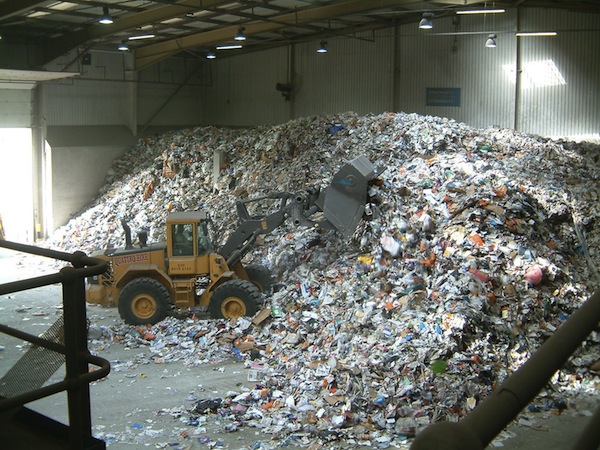Each year, Americans use almost 90 tons of paper and paper-related products. And according to the Environmental Protection Agency (EPA), paper made up 29 percent—71 million tons—of municipal solid waste generated in 2010, which was more than any other type of trash. But in the same year, Americans recycled close to 63 percent of the paper they used, saving about 765 trees, 315,000 gallons of water, and 148.5 yards of landfill space. It also saved enough energy to power 45 American homes, and reduced greenhouse gas emissions by 45 metric tons of carbon equivalent.
That’s a really big deal. And although the world still uses a significant amount of wood in paper products, Oregonians are doing their part to reduce that tonnage—Oregon ranks third in the nation behind New York and California in terms of the availability of curbside paper recycling. Locally, Allied Waste recycles more than 24,000 tons of mixed recyclables each year, which is approximately 48 percent of all waste generated.
But while Americans are steadily increasing the amounts and types of recyclable paper items, paper recycling is not without its problems. While the EPA estimates that recycled material contributes to one-third of the paper produced in the U.S. each year, one-third comes from wood chips and scraps from sawmills, and the final third still comes from living trees.
You may also be surprised by how much of the paper you send off in your tan recycling bin each week doesn’t get recycled. While we’re now able to recycle coated cardboard milk and juice containers—a recent improvement—paper contaminated with any food at all, including cardboard pizza boxes, is rejected and trucked to the landfill. We can’t recycle paper towels, tissues, photographs, or laminated paper such as fast food wrappers and pet food bags. Most paper cups and plates are rejected, too—it’s not usually visible, but most contain a layer of plastic. Leaving staples in place is generally OK, but in essence, recyclable paper must be clean, well-sorted, and uncontaminated. And while we can recycle paper containing self-adhesives—think peel-and-stick stamps, address labels, and sticky notes—these adhesives can jam industrial paper recycling equipment.
Paper also can’t be recycled forever. It’s estimated that paper fibers can be recycled about three to seven times; each time recycled fibers are processed, they become shorter and stiffer. Paper towels, coffee filters, and toilet paper, for example, are often made with the most re-recycled content because these wood fibers are no longer useful in paper-making.
Additionally, any ink in recycled paper must be removed using chemical treatments, often surfactants, after which the ink is washed away—up to 22 percent of the weight of recycled paper is lost in this process. According to the leading Technical Association for the Worldwide Pulp, Paper and Converting Industry (TAPPI), ink and other contaminants “can be burned to generate energy to run the mill, or sold to make such useful materials as compost or gravel for roads.” This material is also simply discarded as waste by some paper recycling plants. Recycled paper, like paper made from whole trees and sawmill scraps, may also be bleached. While many mills now use hydrogen peroxide or sodium hydrosulfite, some still use chlorine in this process. Chemicals and by-products from bleaching and de-inking are often released into wastewater streams, and in some cases, directly into the environment.
Although recycling paper is certainly an improvement over producing it from whole trees alone, it’s still a major industrial process that uses huge quantities of chemicals, materials, water, and energy to create a product that can’t be recycled forever.
Our goal should be a significant reduction in consumption of non-reusable materials—use refillable containers to purchase cereals, grains, cooking oils, and anything else available in bulk; print fewer pages each year; and when you have to buy paper products, buy recycled materials. If every American sent one less greeting card between Thanksgiving and New Year’s Day, we would save 50,000 cubic yards of paper annually—enough to fill a football field 10 stories high. Paper grocery bags also cost significantly more for stores to purchase than plastic bags—given Corvallis’ recent ban on plastic grocery bags, bringing your own reusable bags to the farmers’ market and grocery stores won’t just help reduce paper use, it will help keep costs down for local store owners.
By Genevieve Weber
RELATED LINKS:
http://www.corvallis.disposal.com/Pages/Recycling.aspx
– Corvallis’ recycling information website (via Allied Waste)
http://www.epa.gov/osw/conserve/materials/paper/index.htm
– U.S. Environmental Protection Agency paper recycling information
http://stats.paperrecycles.org/maps/
– Curb-side recycling pick-up availability—a comparison of U.S. states.
Do you have a story for The Advocate? Email editor@corvallisadvocate.com


